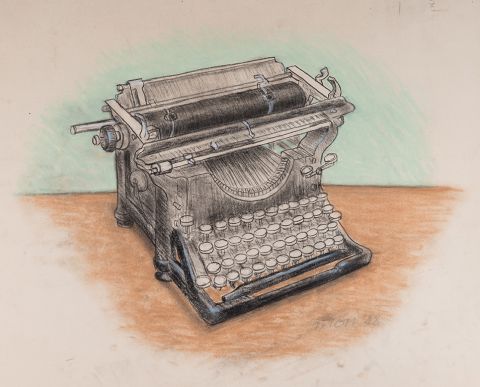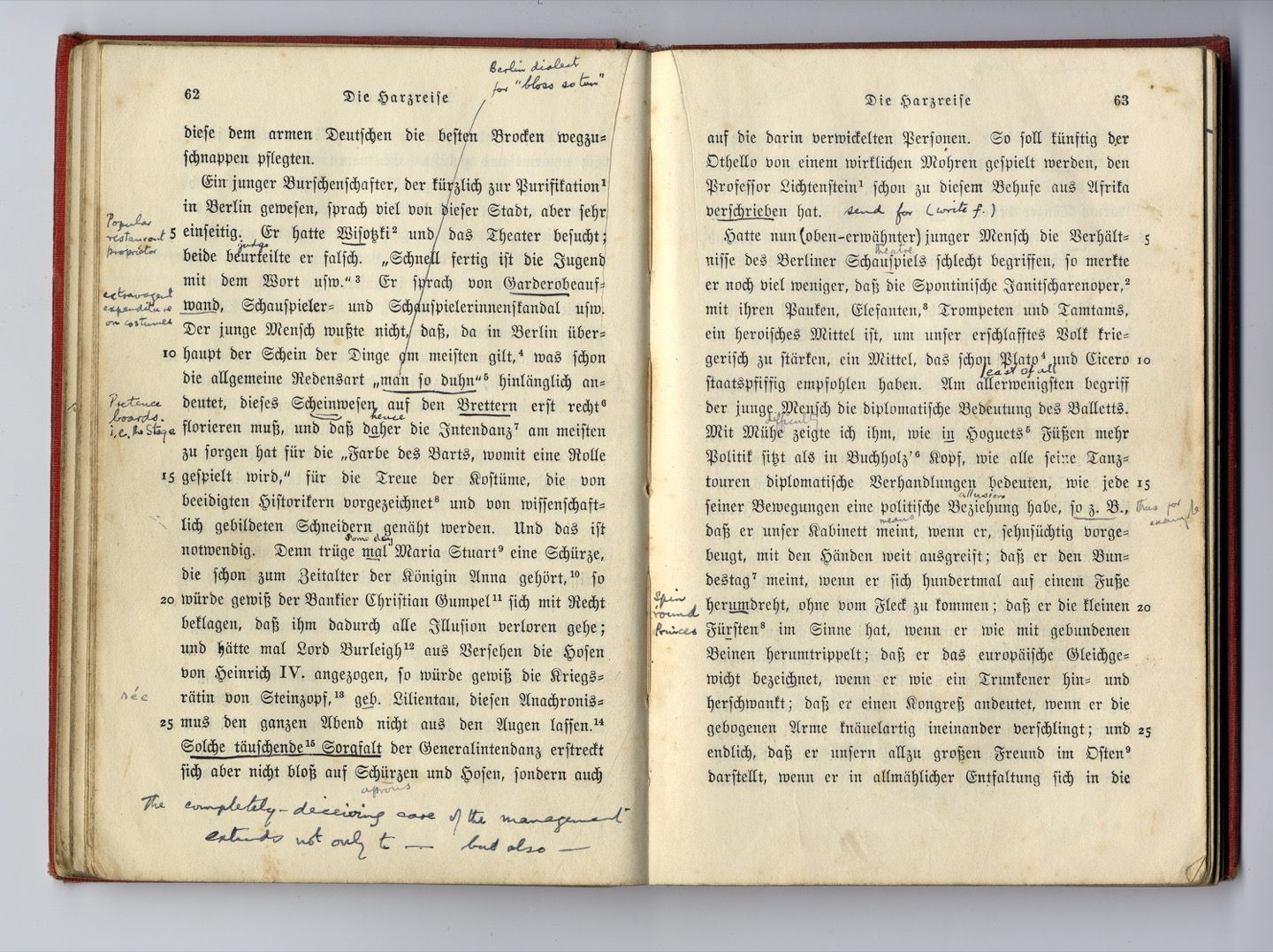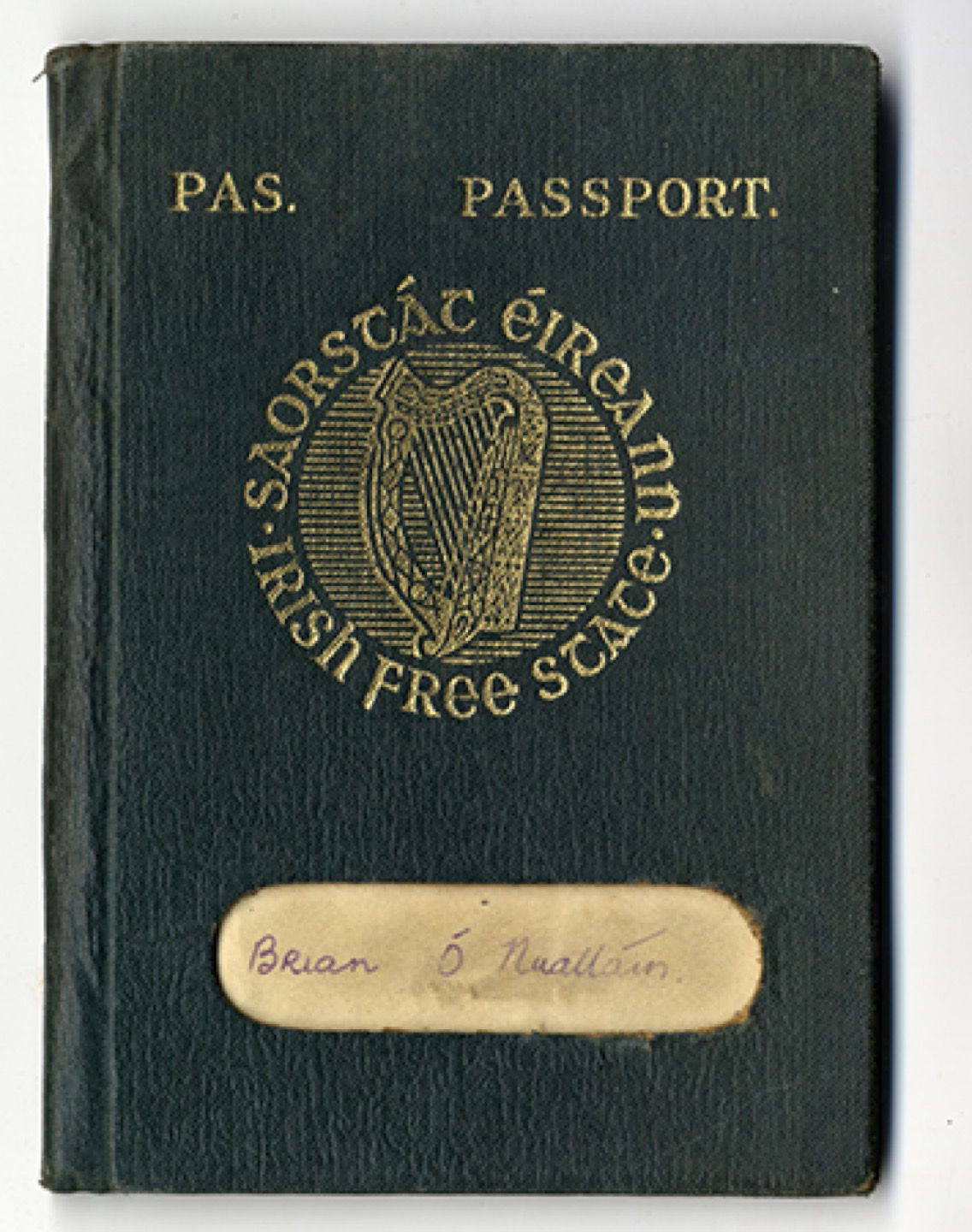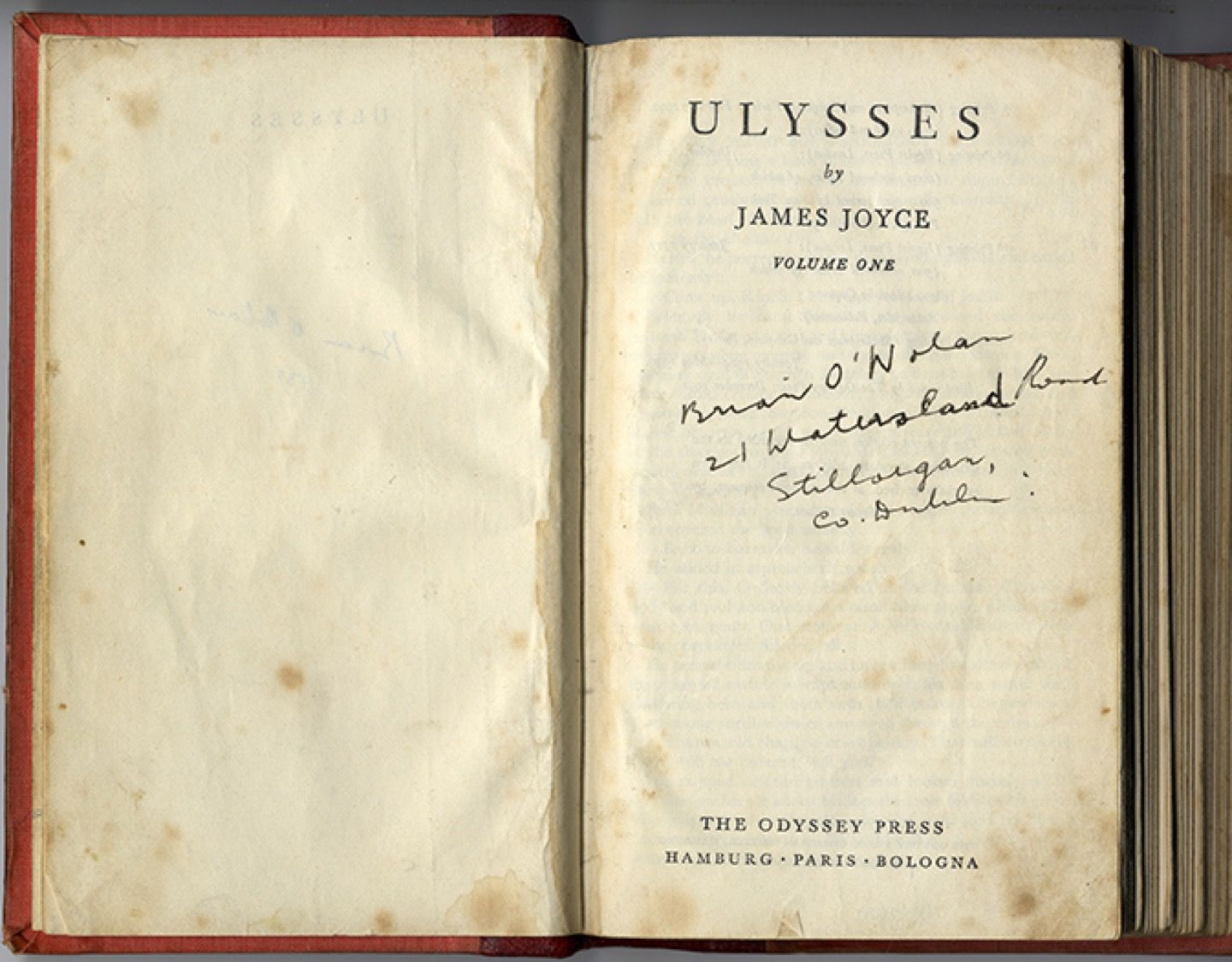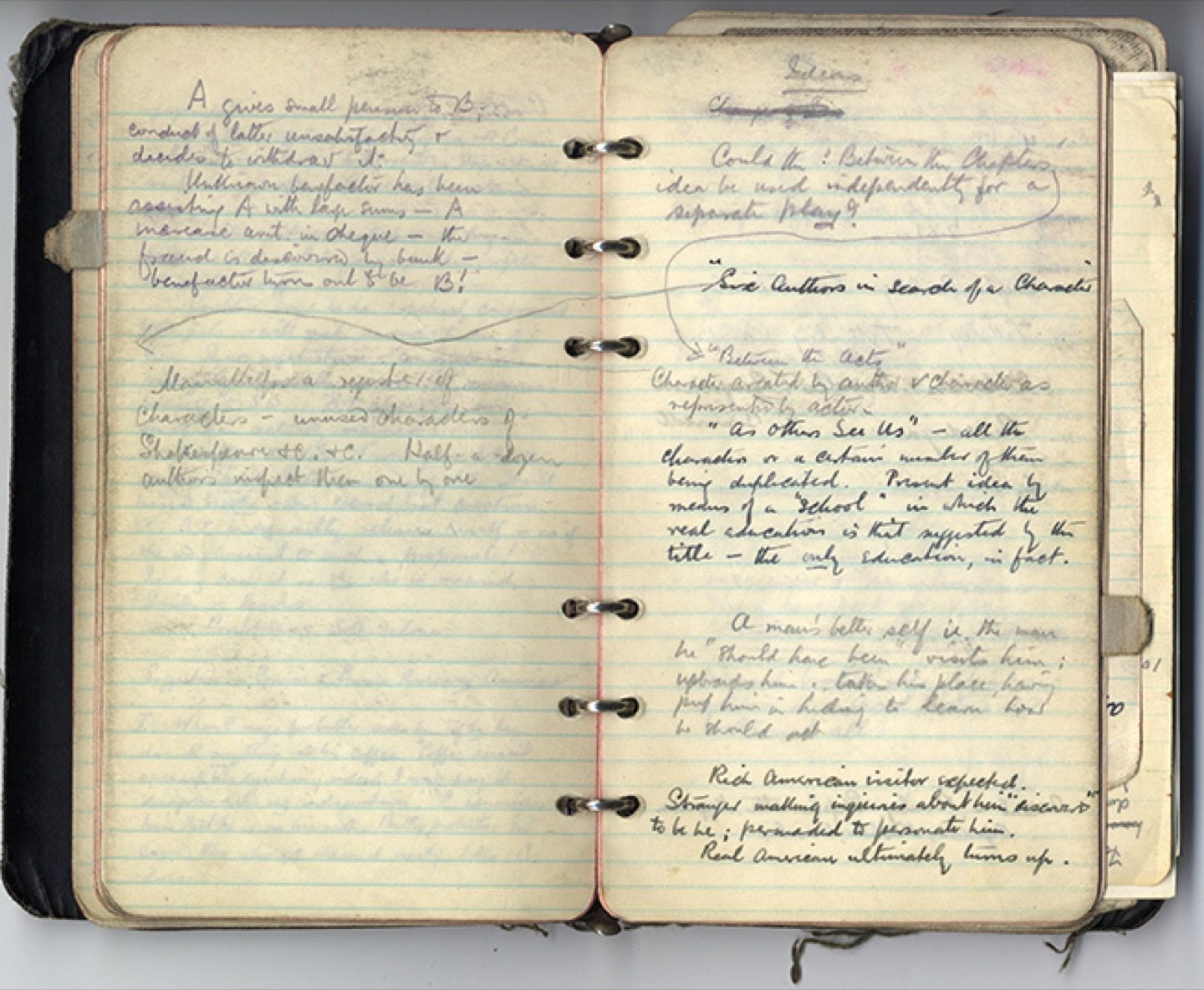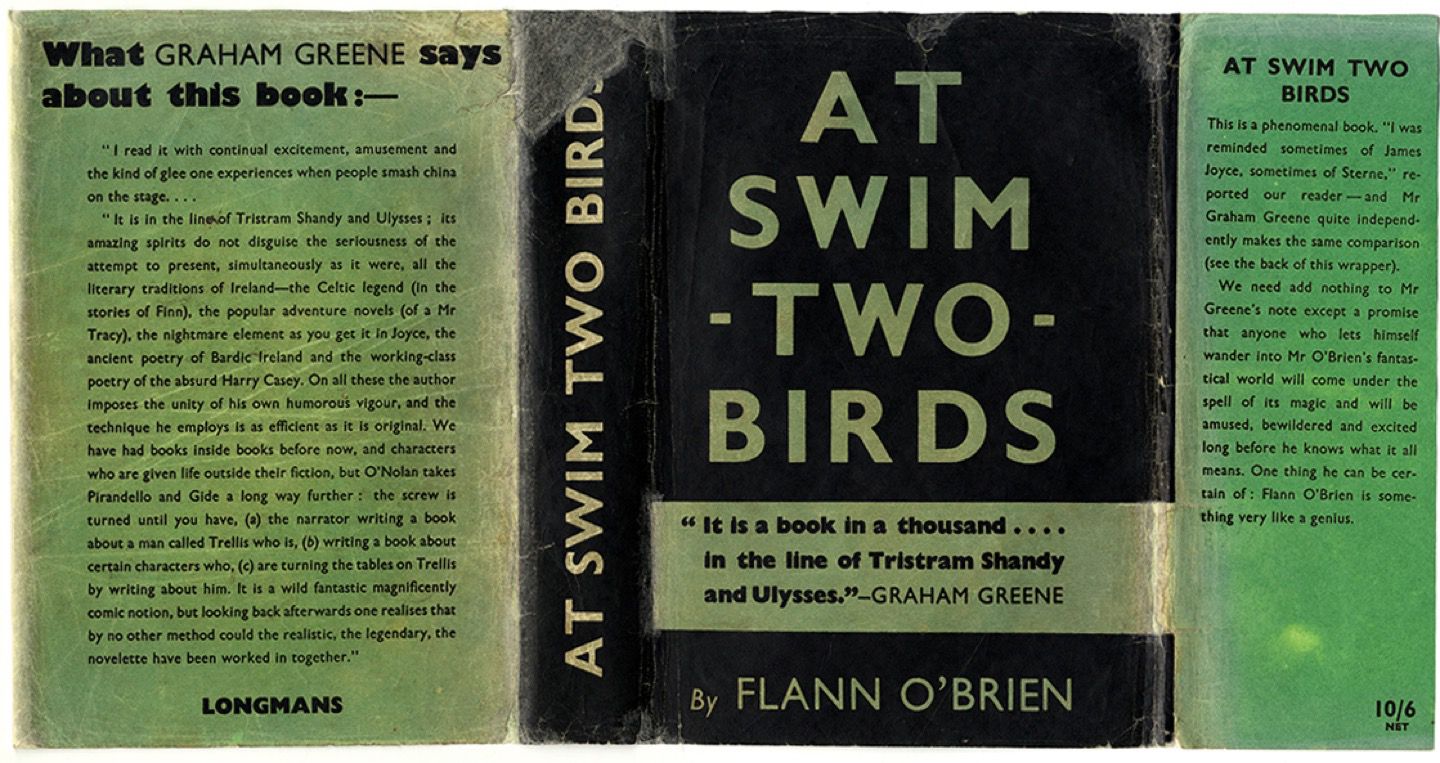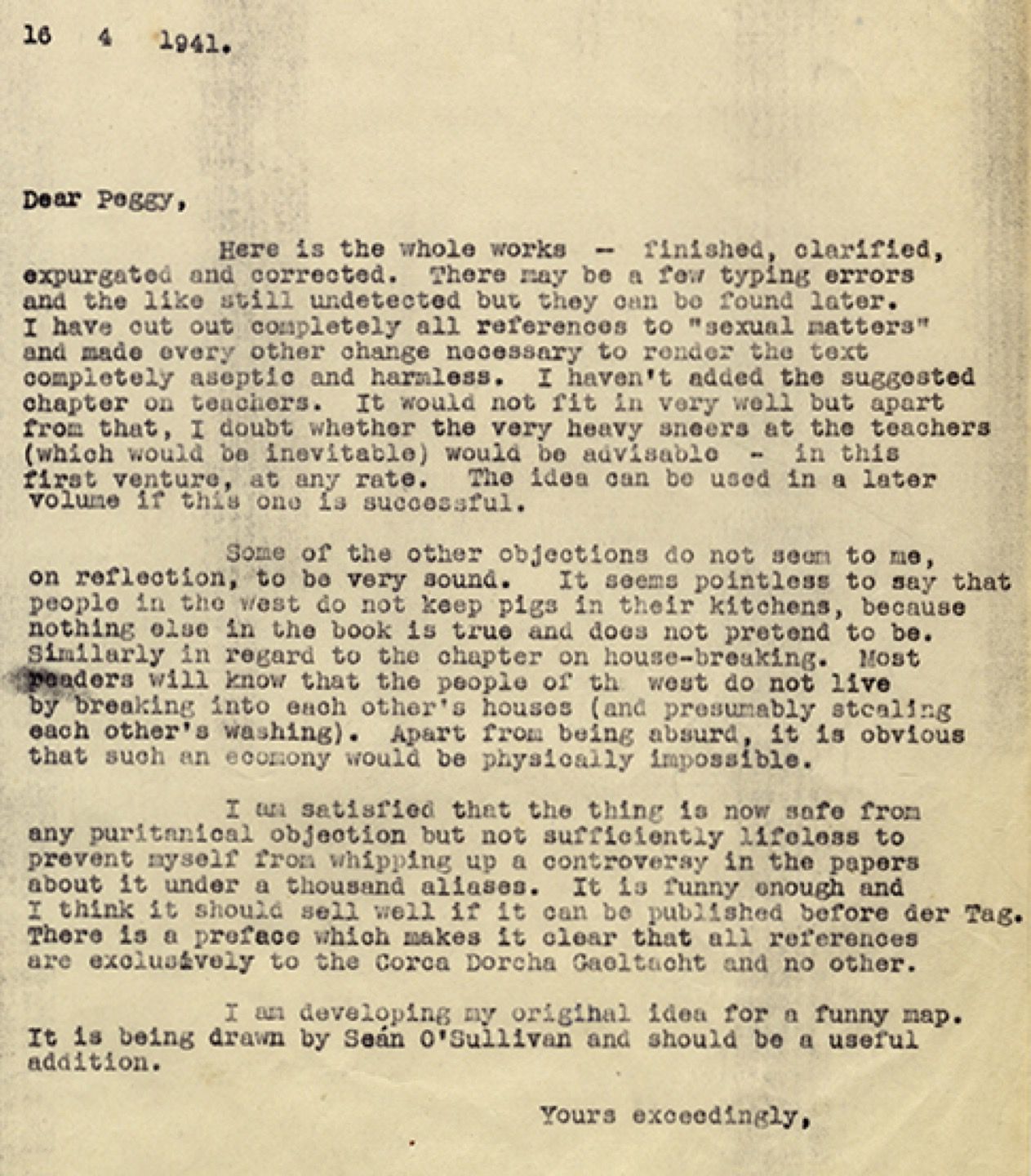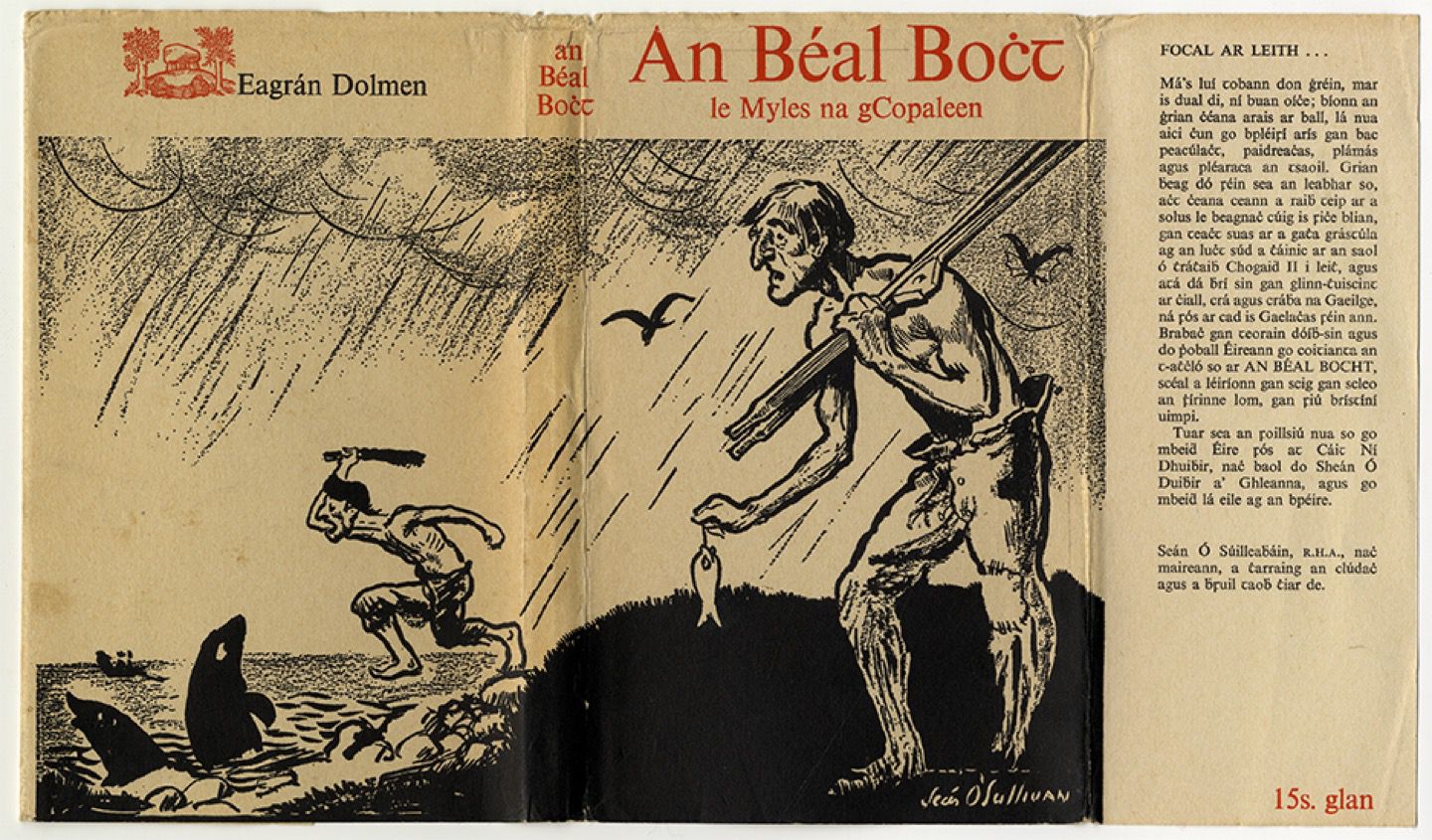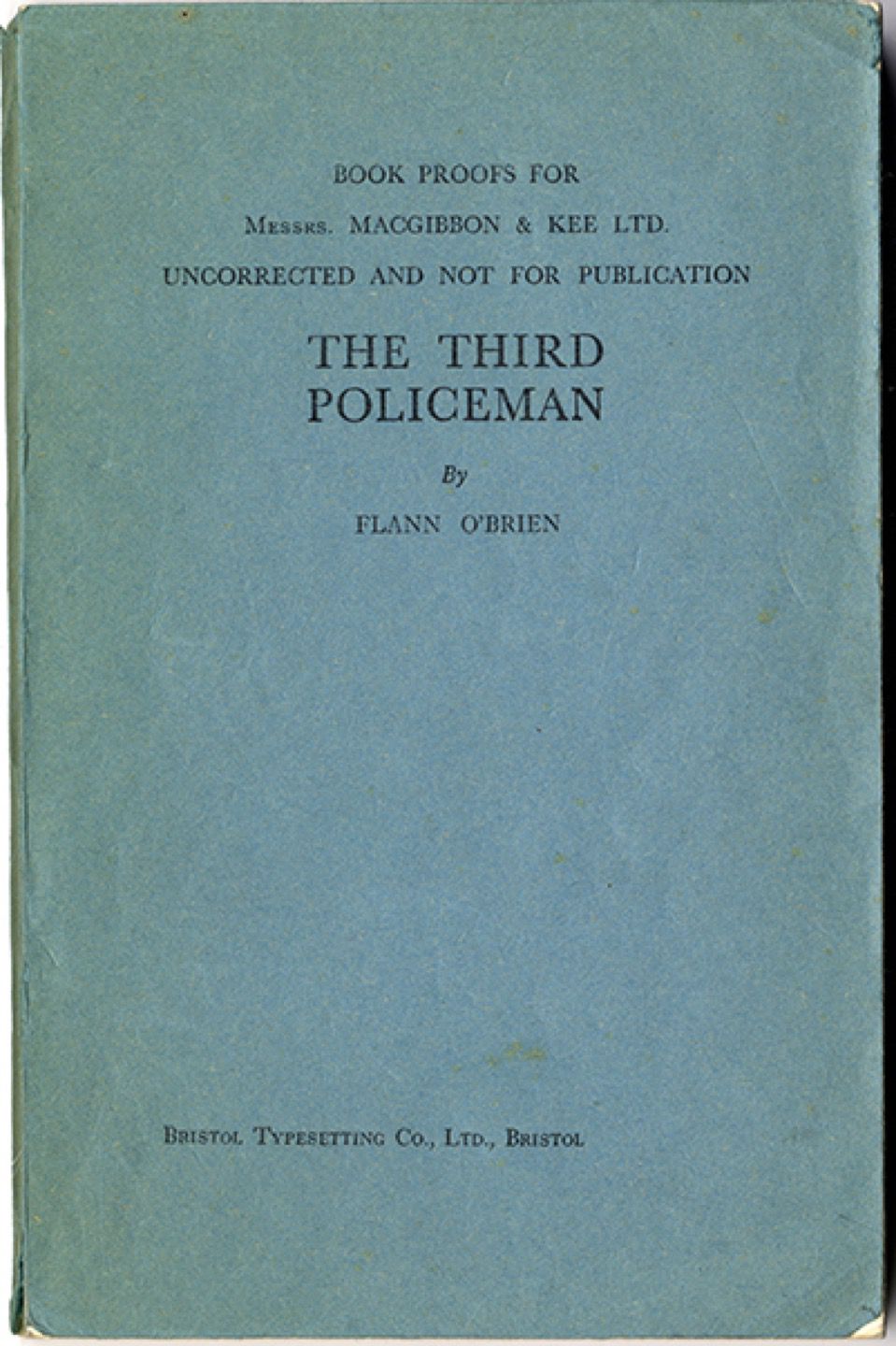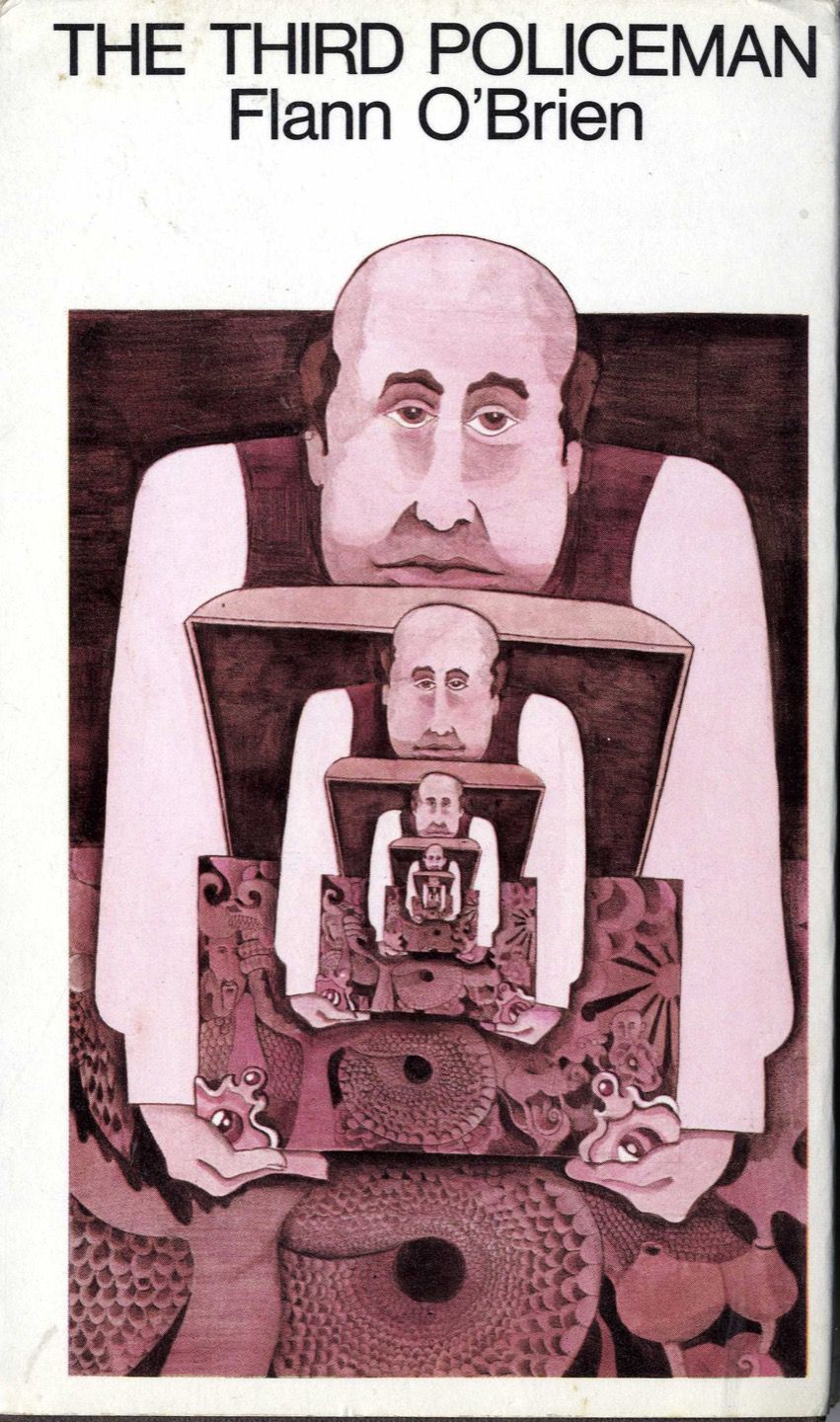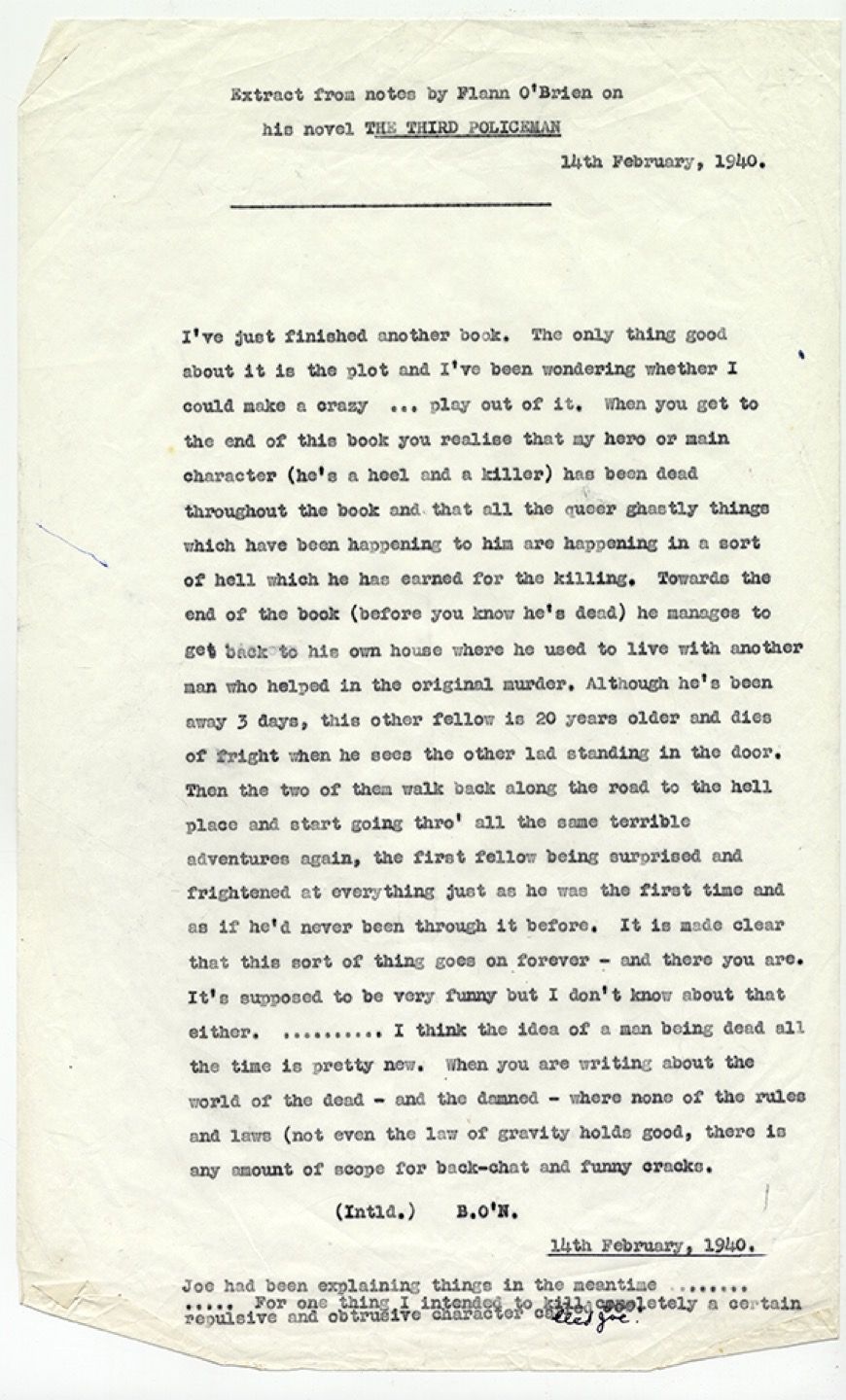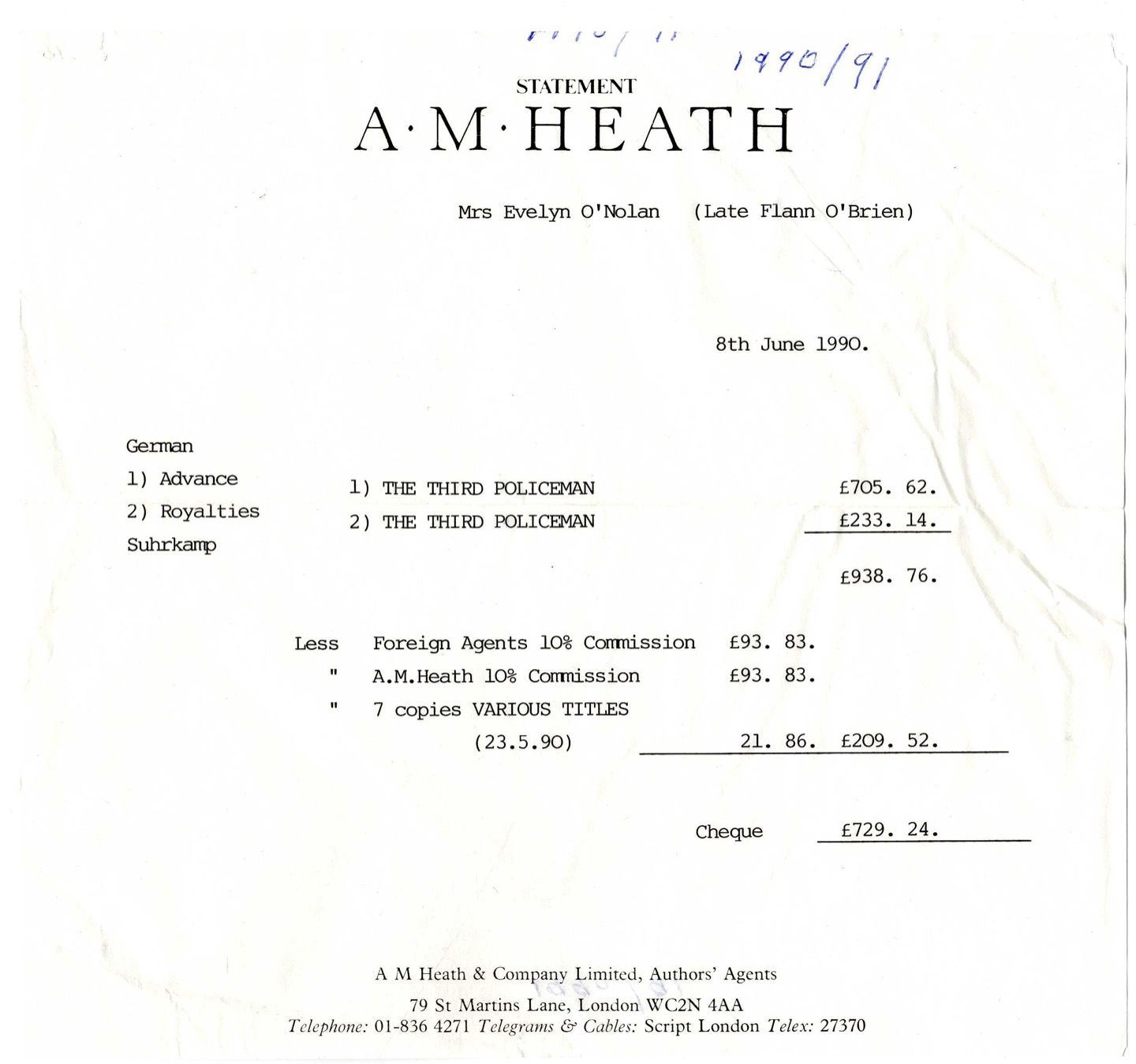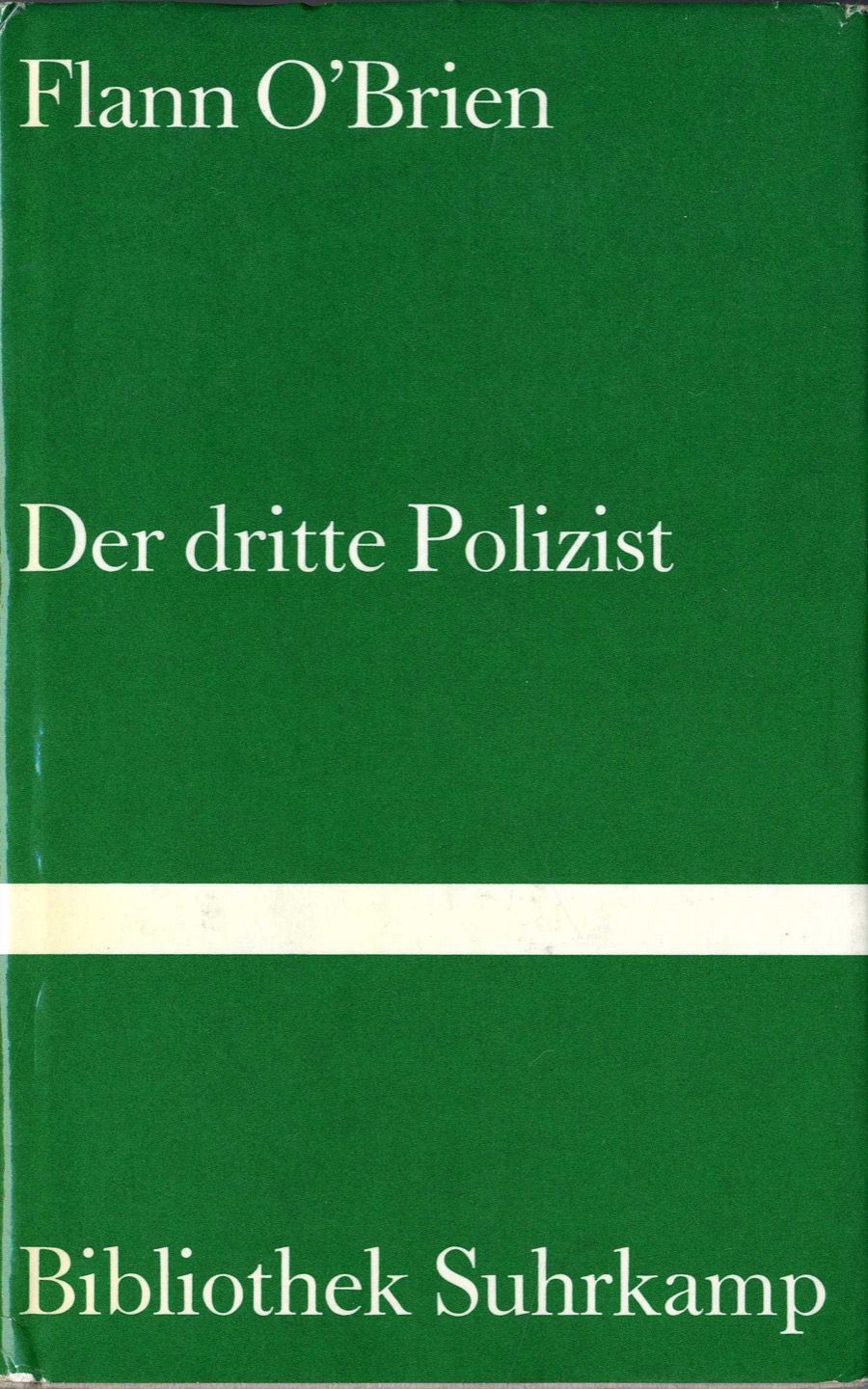Novels
The Man in the Gaelic Mask
O’Nolan first used his most enduring pseudonym in an exchange of letters with playwright Frank O’Connor and short story write Sean O’Faoláin published in The Irish Times in January 1939.
With sardonic wit, O’Nolan ridiculed the artistic posturing of both men, baiting O’Faoláin to retort. Suspecting the byline “Flann O’Brien” to be a disguised nom de guerre on account of the anachronistic forename, he admonished his camouflaged adversary: “I recommend the Man in the Gaelic mask to note that, when ever he feels inclined to address his spleen to me, if he would breathe deeply through his nose it would keep his mouth shut.”
O’Nolan may have found the inspiration for the pen name in a series of articles the Times ran on Irish family names, which had included an entry on “Blood” a few weeks before: “The name is really an anglicized version of the name Flann, which word in Irish means Blood … According to O’Hart’s Irish Pedigrees, the name Blood comes from one Blad, who is of the line of O’Brien, Kings of Thomond.”
Wanderlost
During his university years, O’Nolan had the opportunity to study German, and may have used this 1929 London edition of Heinrich Heine’s romantic travelogue, Die Harzreise (Journey to the Harz Mountains) to improve his knowledge of the language, judging by his numerous annotations. Perhaps a nostalgic touch, one of the characters in At Swim-Two-Birds asks for a loan to buy a copy.
Post graduation, O’Nolan traveled to Germany, visiting Cologne and Berlin in the fall of 1936, just a few weeks after the summer Olympics were held there under Hitler’s patronage. It appears to be the only time he ever ventured to the continent, or beyond—unlike James Joyce, who left Dublin for Zurich around the same age and seldom returned.
O’Nolan both admired and envied Joyce, reputedly commenting: “I declare to God if I hear that name Joyce one more time I will surely froth at the gob!” O’Nolan read Ulysses, and in his own way wanted to outdo his literary exemplar and rival in surreptitiously lampooning the Ireland of his day.
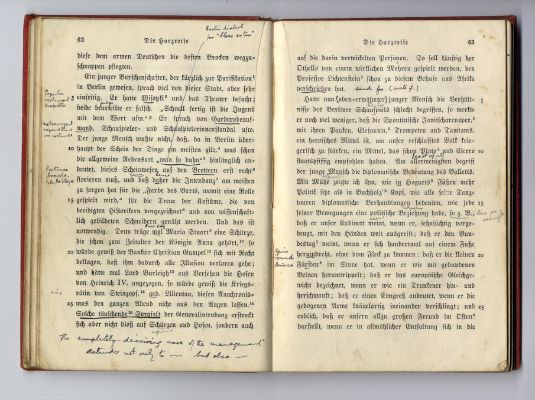
O’Nolan’s annotated copy of Die Harzweise
Heine, Die Harzweise, PT2309 .H2 V3 1929 O’BRIEN LIBRARY
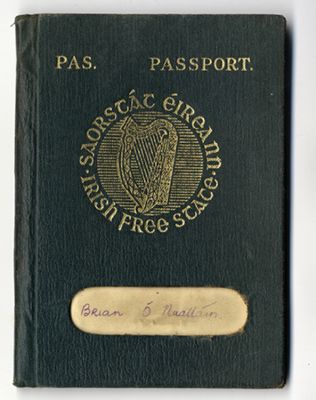
Brian O’Nolan’s passport, 1936
Box 24, Flann O’Brien Papers MS1997-027
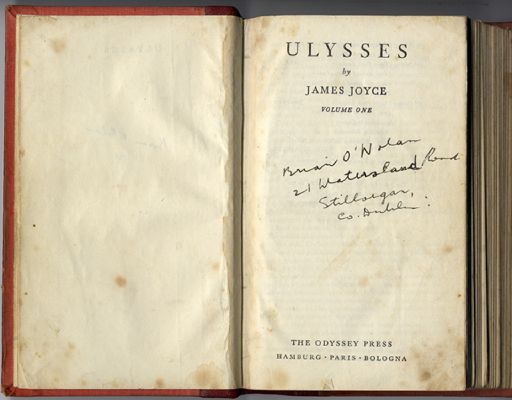
Brian O’Nolan’s personal copy of James Joyce’s Ulysses
Joyce, Ulysses, PR6019 .O9 U4 1932 O’BRIEN LIBRARY
Six Authors in Search of a Character
In a notebook that belonged to O’Nolan’s father, various plot ideas are sketched out in pencil and pen. A twist on Luigi Pirandello’s 1921 play “Six Characters in Search of an Author” may represent a germ of the metafictional premise around which his first novel, At Swim-Two Birds, is constructed, with characters from different subplots coming together to conspire against the narrator. O’Nolan toyed with a similar idea of fictional characters rebelling against their creator in a story he wrote he published in the UCD literary magazine Comhthrom Féinne.
Published in London in 1939 by Longman’s at the recommendation of Graham Greene, O’Nolan’s debut novel as Flann O’Brien garnered praise from other writers, if not critics, including a coveted endorsement from none other than James Joyce. Meanwhile a piqued Seán Ó Faoláin, with whom “Flann” had lately sparred in the editorial pages of The Irish Times, commented in a review that it “had a general odour of spilt Joyce all over it.” Gun shy, O’Nolan attempted to withdrew the suggestion he had made to Longman’s to publish the novel using the pen name he had since turned on Ó Faoláin, but it was too late: the genie could not be put back in the ink bottle.
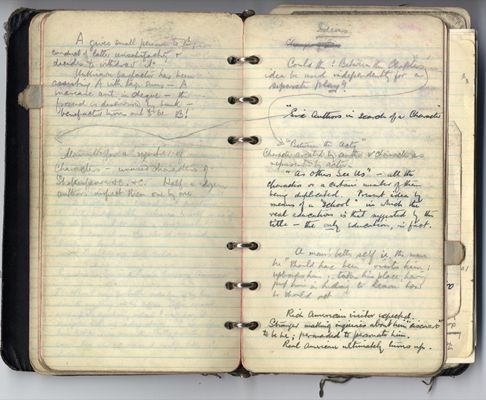
Michael V. O’Nolan’s noteboook
Box 1, folder 58 Flann O’Brien Papers MS1997-027
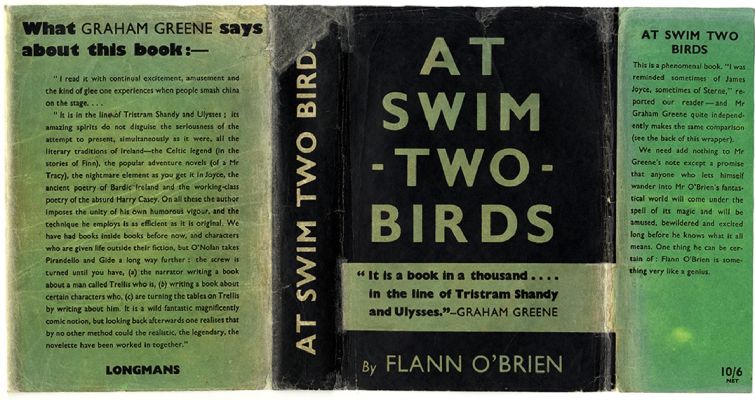
First Edition of At Swim Two Birds, 1939
O’Brien, At Swim Two Birds, PR6029 .N56 A8 1939b O’BRIEN LIBRARY
Pigs in the Kitchen?
In October 1940, O’Nolan started writing a daily column for The Irish Times in Irish under the fictional Irish name Myles na Gopaleen, so it is only fitting that he should attribute the Irish language novel he published the following year to his Irish alter ego.
Yet getting it published was not easy. Acting perhaps on a suggestion from friend and fellow writer Patrick Kavanagh, O’Nolan approached Peggy Gough, an editor with the Dublin publisher Browne and Nolan.
In a letter to Gough dated 16 April 1941, O’Nolan reports on his attempts to address readers’ comments by excising “all references to ‘sexual matters’” and otherwise rendering the revised text “aseptic and harmless.” Browne and Nolan nevertheless declined to publish the work, but it was brought out later in the year by An Press Náisiúnta (The National Press).
An English translation was published in New York in 1974 as The Poor Mouth, awkwardly crediting Flann O’Brien as author. The original Irish title, An Béal Bocht, references the penchant of peasant farmers “to put on the poor mouth” and exaggerate the extremity of their poverty, a posturing from which this exuberant parody of the genre of Irish language autobiographies draws much of its humor.
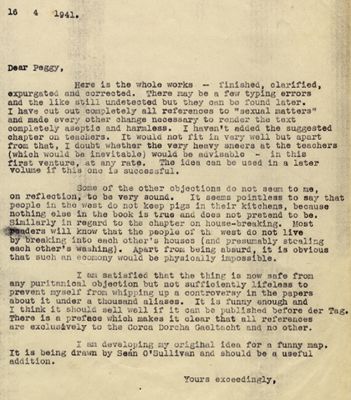
Box 1, folder 33, Flann O’Brien Papers MS1997-027
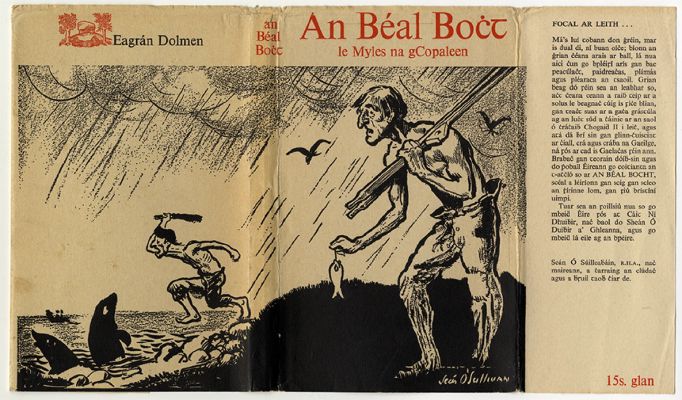
An béal boċt
O’Brien, An béal boċt, PB1399 .059 B4 1964 O’BRIEN LIBRARY c. 3
“Is it about a bicycle?”
Ironically, the novel that brought O’Nolan the fame he craved and established Flann O’Brien as his most enduring pen name was initially rejected by publishers. To deflect potential embarrassment, he invented stories about how the manuscript had been left on a tram or blown out of the boot of his car.
Published posthumously, The Third Policeman bears the trappings of a cult classic. The anonymous main character, a murderer, discovers he has already been killed after escaping execution. Bizarre pseudo-scientific theories are put forth as fact, while the trappings of academic scholarship are debunked in wacky footnotes. The reader is catapulted from existential horror to outlandish humor, from passages of lyrical beauty to folksy dialogue. It is about a stolen bicycle, and so much more.
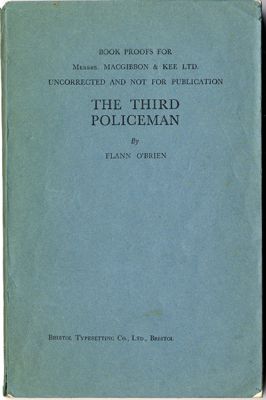
The Third Policeman Proof
O’Brien, The Third Policeman, PR6029 .N56 .T5 1967b O’BRIEN LIBRARY
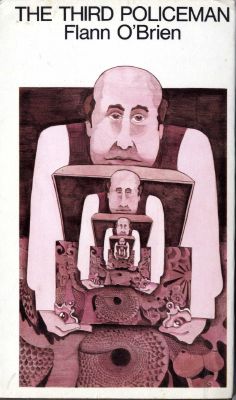
O’Brien, The Third Policeman, PR6029 .N56 T5 1967 O’BRIEN LIBRARY
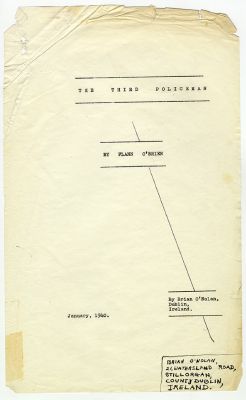
The Third Policeman, annotated typescript, 1940 January
Box 4, folder 4, Flann O’Brien Papers MS1997-027
In February 1940, O’Nolan sent novelist and playwright William Saroyan a synopsis, asking his help to find a publisher in America and advise him on whether to turn it into a play. Saroyan could not help with the former, but encouraged the latter. Two years before his death, O’Nolan did manage to publish another novel loosely based on The Third Policeman. Irish dramatist Hugh Leonard scripted a version for the stage.
O’Nolan’s widow, Evelyn, managed his literary estate. She worked with a London publisher to bring out The Third Policeman the year after his death. It was subsequently translated into more than two dozen languages, increasing the royalties that helped support her.
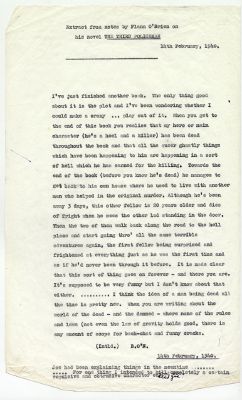
The Third Policeman Proof
O’Brien, The Third Policeman, PR6029 .N56 .T5 1967b O’BRIEN LIBRARY
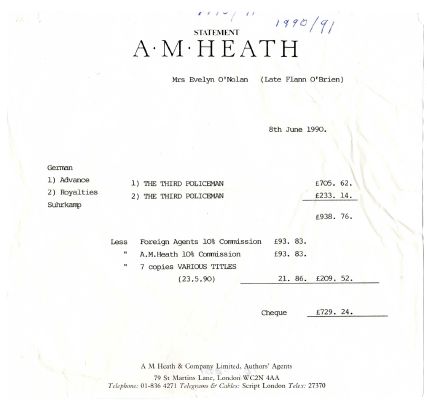
Advance and Royalties Statement for The Third Policeman
Box 5, folder 22, Flann O’Brien Papers MS1997-027
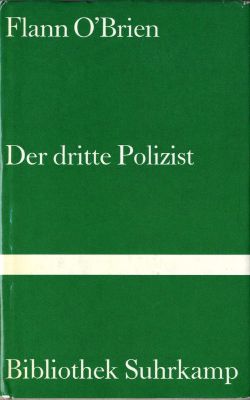
O’Brien, Der Dritte Polizist, PR6029 .N56 T515 1975 O’BRIEN LIBRARY

